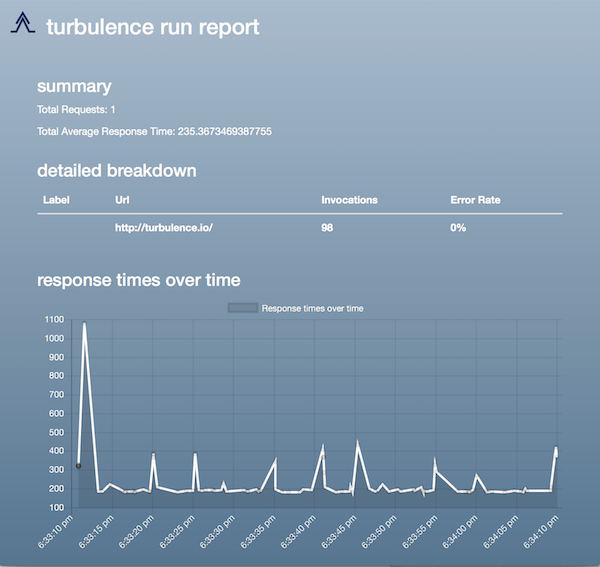Turbulence
Introduction
A plug-in based, distributed performance testing tool for developers
Installation
Install turbulence with npm:
npm install -g turbulence
Quick-Start
Turbulence uses a Javascript fluent interface to define test scripts. Create an empty my_test_plan.turbulence file to start, and paste the example code below:
turbulence This will define a test that runs 10 virtual users against the turbulence home page. The users will pause from 2-10 seconds between every request, and continue for 60 seconds. The tests can then be run from the command line:
turbulence my_test_plan.turbulence
When turbulence finishes, a Report.html file will be created in the current directory. Open the file in a web browser and you should see the run report:

Contributing
Before submitting a pull request, please make sure that your changes are covered by proper tests, and review the Style Guide. All code should pass the linter. Run npm run all to run the full regression test suite and linter checks.
License
Turbulence is licensed under the terms of the MIT license.